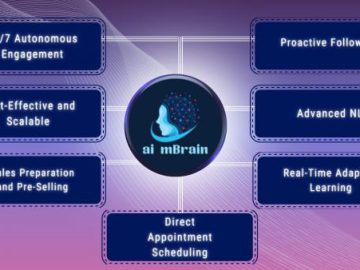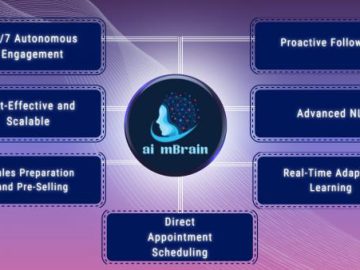In this article, we’ll cover everything you need to know about featured snippets and how to optimize your website content for maximum visibility.
What is a Featured Snippet?
If you search “What is SaaS SEO?”, you’ll notice how Google pulls out a direct, concise, and insightful answer to your search query. This answer sits on top of all other search engine ranking pages (SERPs) and is known as a “featured snippet”.
Sitting at position zero, featured snippets are helpful not only to the random searchers looking for a basic answer, but also to seasoned marketers looking for ways to outrank competitors, drive targeted traffic, and boost clicks and conversions.
Research by Semrush suggests that 19% of keywords in Google have a featured snippet. They show up frequently for long-tail keywords, provide to-the-point answers to the searchers’ queries, encourage them to visit your website, explore other web pages and content pieces, and eventually sign up for a free trial if they find your product relevant.
Therefore, as an SEO professional, you must aim for featured snippets to bring high-intent traffic to your website.
So, a featured snippet is a summarized piece of content at the top of Google’s SERP that answers a user’s query in the most informative yet brief way possible. The snippet collects information from the top-ranking content pieces that offer accurate, informative, and concise answers to a user’s query.
Here’s an example. 👇
The answer at the top that Google feels does justice to a searcher and their intent is what is showcased as a feature snippet.
Types of Featured Snippets
There are four types to target when optimizing your blogs for featured snippets.
Paragraph featured snippets
According to Semrush, paragraph featured snippets have “40 to 50 words or around 300 characters roughly”, and 70% of featured snippets are the paragraph type.
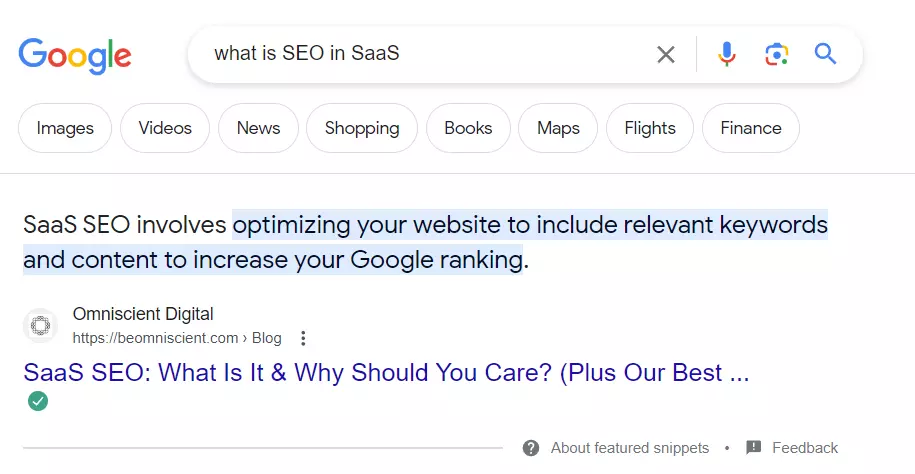
Most paragraph-featured snippets appear to be “what” and “why” search queries, indicating that they’re informational.
Bulleted or numbered feature snippets
This featured snippet type usually appears for “how” and “what” search queries that must be answered in a step-by-step format or as an items list. Listicle-featured snippets can be displayed in two ways:
- Ordered lists are numbered lists displaying ranked items or steps.
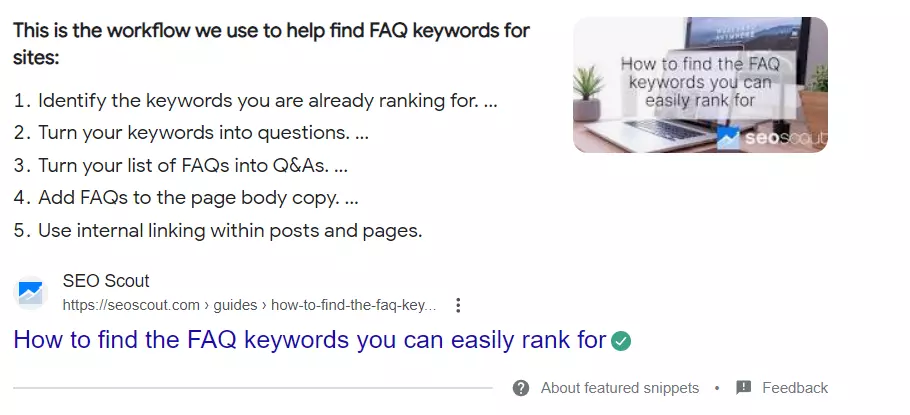
- Unordered lists are lists of items that aren’t ranked in a specific order.
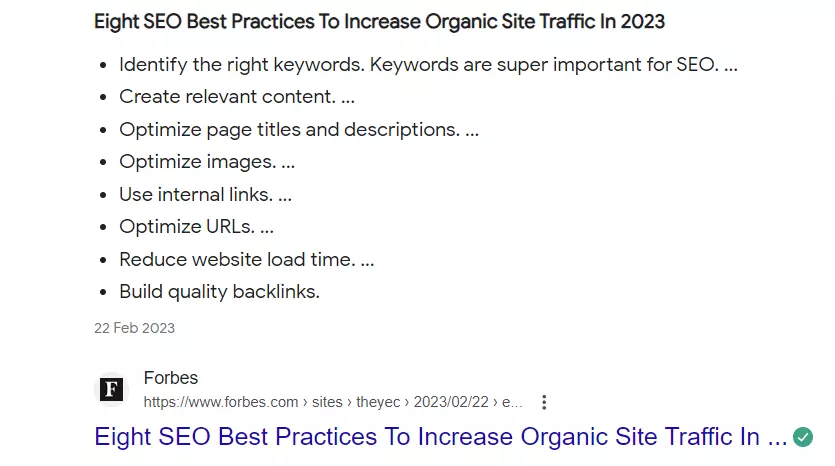
Table featured snippets
Google pulls out table-featured snippets for data that must be displayed in rows and columns, such as price, size, dates, tax slabs, years, and so on. Table types featuring snippets have an average of five rows and two columns.
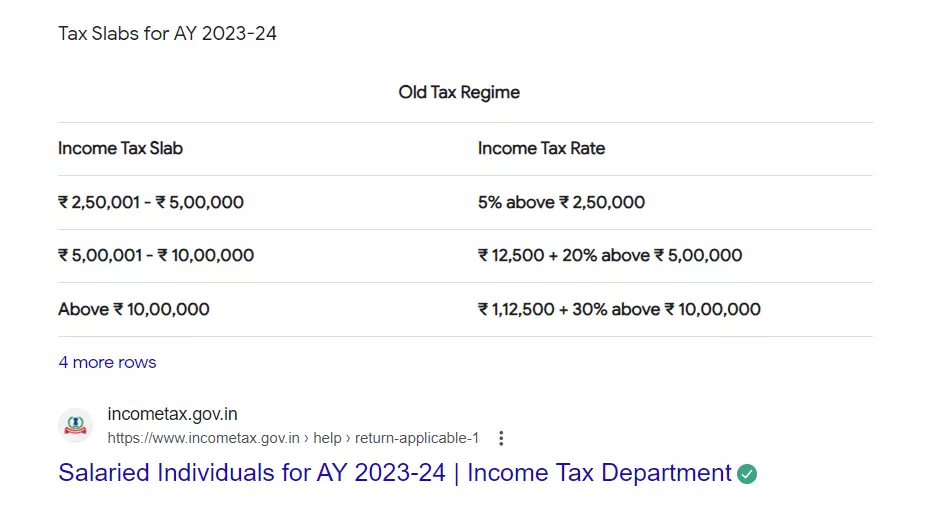
Video featured snippets
Video clips at position zero mostly appear for “how-to” search queries. Their duration stands at an average of 6 minutes and 39 seconds.
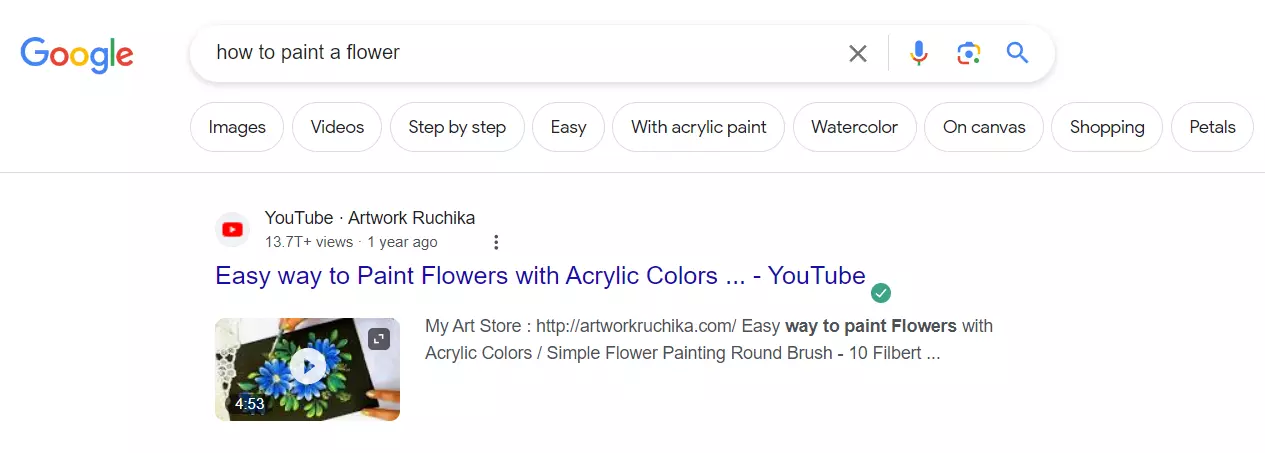
Why are Featured Snippets Worth the Chase?
Let’s start with numbers to understand why you must chase featured snippets.
- Ahrefs’ study of two million featured snippets shows that 30.9% of featured snippets rank in position one.
- An EngineScout survey of 3500+ regular Google users revealed that featured snippets received 35.1% of the total click-share.
- According to Semrush reports, 5.53% of all queries have a featured snippet.
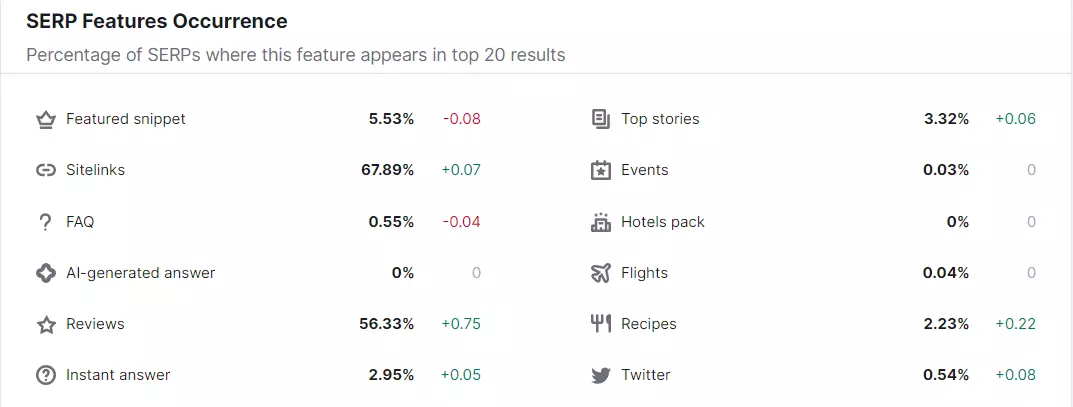
Screenshot source
- Semrush’s study on 10,000 SERPs scaled to iPhone X and Google Pixel screen sizes showed that more than 50% of mobile screens get covered with a featured snippet.
Besides these stats-backed claims, you must target featured snippets for a few other reasons:
- To rank higher. A featured snippet ranks higher than the #1 search result on Google’s SERPs. A featured snippet is the first thing a searcher looks at. Featured snippets provide your brand with the first-mover advantage. If the searcher likes the content, chances are they won’t explore other pieces, which means a huge advantage over your competitors.
- You capture a more significant chunk of the SERPs. Featured snippets are larger than the standard links on the SERPs. As a result, you’re more likely to catch users’ attention.
- Your credibility spikes. As Google chooses to quote your blog post, it instantly shows that your website is a trusted source of information — a great source of social proof.
- You attract leads most likely to convert. A featured snippet mostly appears for long-tail keywords, indicating specific intent at a particular sales funnel stage. So, you attract audiences who are most likely to convert.
Now that you know why optimizing articles for featured snippets is essential, let’s head over to the how.
How to Optimize for Featured Snippets
Earning featured snippets brings you to the spotlight regardless of your article’s position in the SERPs. Once you format your website’s content, you can replace the featured snippet with yours.
Here’s how you can do it.
1. Start with analyzing SERPs to find snippet opportunities
Analyze the SERPs to find snippet opportunities. Here are the steps:
- Look at the SERP results.
- Categorize them according to your target audience’s intent.
- Read these content pieces and identify the information gaps missing in your content.
- Address these gaps and refine your existing pieces.
💡Pro tip. Keep the featured snippet type the same as the existing one. If you attempt to optimize for a different type, Google will most likely choose the current type that’s ranking. For instance, avoid optimizing for a bulleted snippet when the current one is a paragraph.
2. Optimize for long-tail keywords
According to Semrush’s study, “Of keywords made up of 10 words, 55.5% had a featured snippet.”
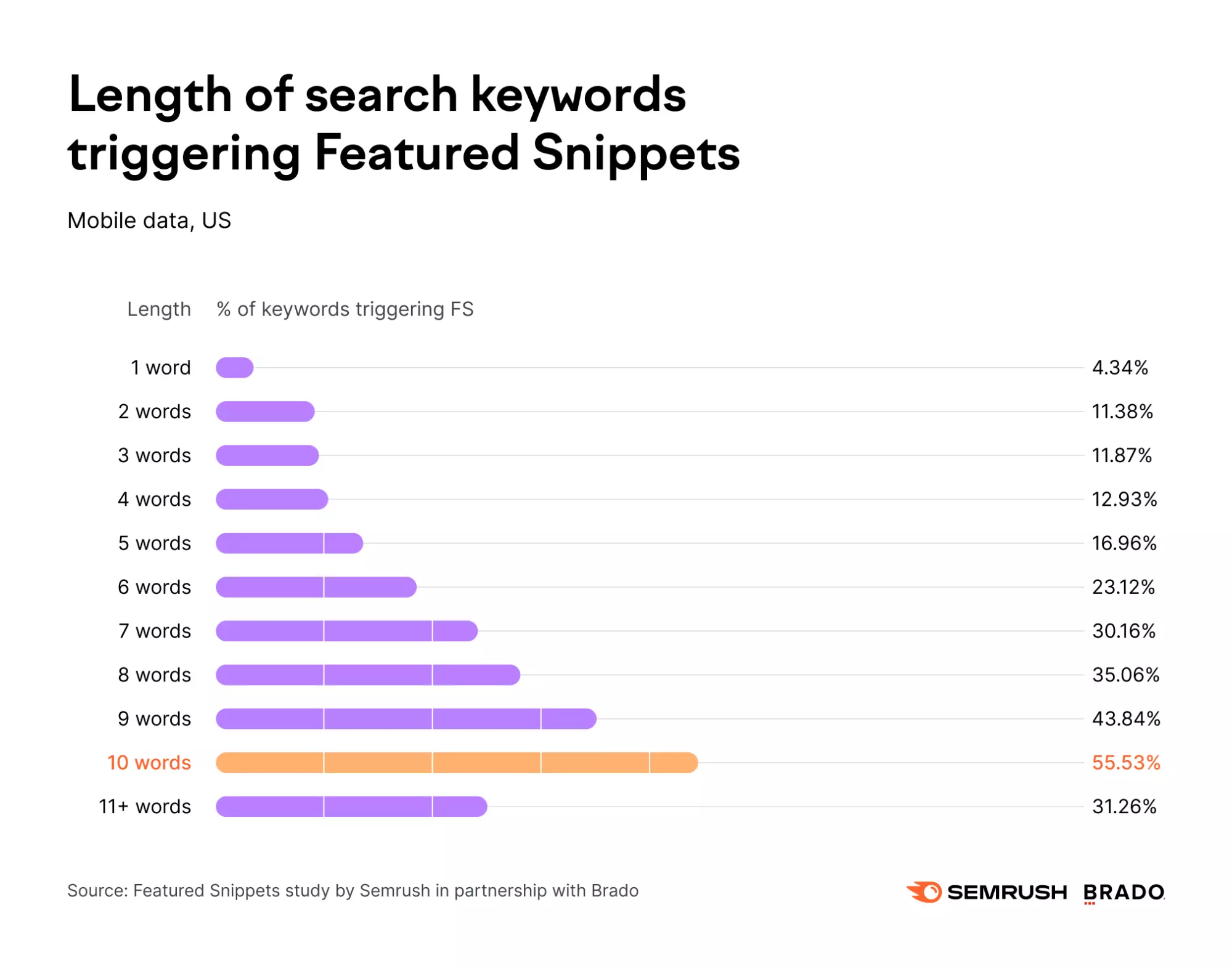
Image source
Targeting long-tail and low-difficulty keywords instead of highly competitive ones makes winning the featured snippet spot easier. Moreover, as discussed above, long-tail keywords reflect a user’s search intent.
Once you understand what the user is looking for, provide them with the content they need — a video, a comparison table, or a precise definition.
3. Focus on Q&A
The primary purpose of a featured snippet is to provide quick, valuable answers to user queries, such as clarifications on Shopify 1099 tax forms for eCommerce businesses, and the best way to achieve that is by publishing Q&A content.
According to Semrush’s study, around 29% of keywords that trigger featured snippets are question-based — “how”, “why”, “what”, “are”, “can”, “do”, and more. These keywords indicate the search for informational content that featured snippets seek to answer.
To easily incorporate question-based content, incorporate questions into your title, and headings or add an FAQ section to your blog. For example, if you’re writing a piece on dedicated servers, you could title the piece “What is a dedicated server?” to target the featured snippet.
💡Pro tip. Check Google’s People Also Ask section, Reddit, AlsoAsked, AnswerThePublic, and Quora to find relevant questions. Answer the question related to your primary target keyword and then answer related questions.
4. Find out what’s currently ranking
Analyze your website and identify the keywords you currently rank for. Look at Google Search Console and use SEO tools like Ahrefs to find keywords you can target to win featured snippets.
Additionally, check competitor websites to find keywords they rank for and get ideas for optimization.
Using Ahrefs, you can easily track the keywords that trigger featured snippets:
- View your Organic keywords report.
- Click on the SERP features filter.
- Choose the featured snippet option from the drop-down.
- Add a position filter from 1–1 and click apply.
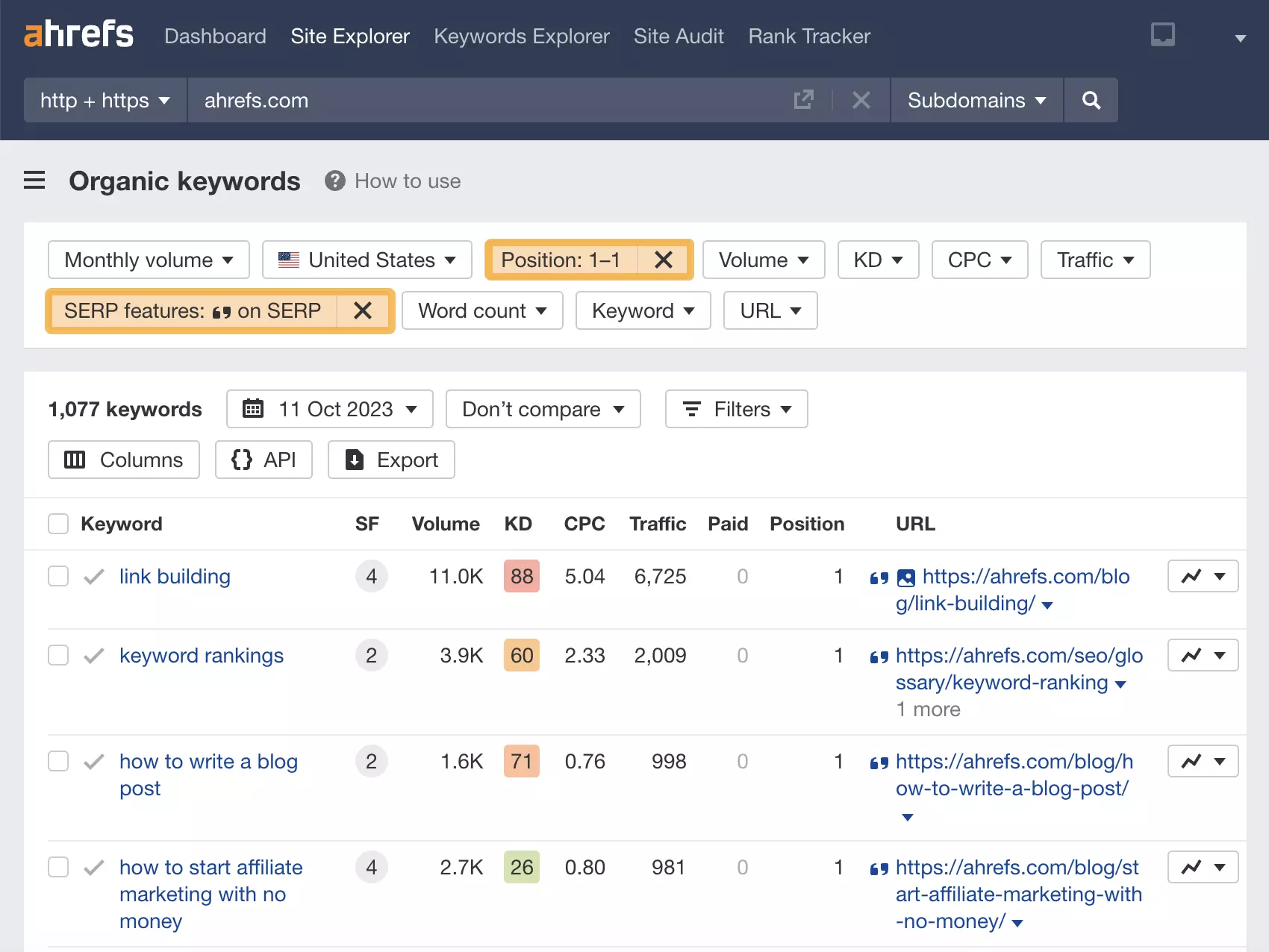
Image source
5. Craft well-structured content
Besides the content quality and writing style, structuring the content well is crucial for featured snippet optimization. According to research, 66% of structured articles appear in the Google SERPs as featured snippets.
- Use descriptive headers that contain long-tail and question-like keywords with H1, H2, H3, and H4 header tags.
- Use short sentences to optimize for paragraph snippets.
- If a specific query displays a bulleted featured snippet, create the answer as a bulleted list.
- Add relevant images along with snippet queries you target to answer.
- Include some user-generated content on the website to reduce the bounce rate. It will help you signal to Google that the blog is more relatable to that particular query.
6. Create clear and readable content
Semrush’s study suggests that a minimum of 1100 words in content often ranks for featured snippets.
Use the inverted pyramid format to create detailed but concise answers. In this format, you give the essential details and the rest later. From an SEO perspective, it shows the readers what they want immediately.
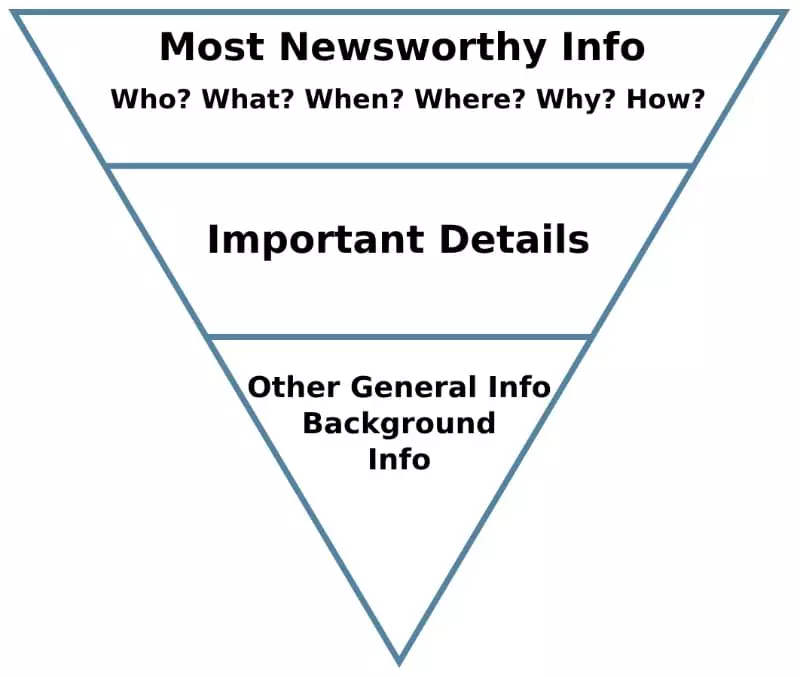
Image source
- For table feature snippet optimization, be concise: give the reader information they can understand at a glance.
- For paragraph feature snippet optimization, write objectively without any personal opinions.
- Readability is a crucial factor in content. Even the most helpful information isn’t useful when your audience can’t understand. Check readability using various tests like Flesh-Kincaid. This test scores a readability from 0 to 100, with higher scores meaning the text is easy to read. Grammarly and Yoast use Flesh-Kincaid to measure readability.
7. Implement SEO tactics
Help Google understand your content page by applying SEO tactics that work well for featured snippets.
- Title tag. Use a headline analyzer like Coschedule to create an engaging and catchy title tag that fits your requirements.
- Meta description. Write a user-centric, keyword-specific and attractive meta description within 155–160 characters to drive the highest clicks.
- Insert links. Insert internal links to help Google identify your website’s most important pages and add trustworthy external links to increase your content’s credibility.
- Image alt attributes. According to Semrush, Google image searches account for 22.6% of all searches. It’s essential to consider image SEO. Add descriptive alt text for your content images to help Google understand what the image is about.
Dos and Don’ts of Optimizing Content for Featured Snippets
Let’s end with a bonus table laying out what you should do to optimize your content in the interests of getting a featured snippet, along with things to avoid.
| DOs | DONTs |
|---|---|
| ✅ Add an “is” statement and heading. For example: “What is XYZ?” Answer: “XYZ is a process …” | ❌ Use “I” and “We”, as they indicate biased content |
| ✅ Define the topic thoroughly in 2–3 sentences | ❌ Add brand names in your snippet text |
| ✅ Add a TOC for lengthy content (3k words+) | ❌ Mix up rich snippets and featured snippets |
| ✅ Use HTTPS to indicate site safety to search engines | ❌ Complicate URL structures. Note: keep your URL short (within 3–4 words) |
| ✅ Put dates on your content to reduce confusion and build trust | ❌ Add excessive keywords and repetitive content when writing numbered or bulleted lists |
Conclusion
Featured snippets are a great way to boost your organic traffic. They capture your searcher’s attention by providing the information they seek within 40 to 45 words. In short, featured snippets offer quick answers, boosting organic rankings, brand visibility, and traffic.
If you’re wondering how to optimize for featured snippets on Google, craft insightful content that directly answers user queries. Follow the SEO best practices to boost your chances of winning featured snippets.
Finally, set realistic expectations, as featured snippets take time to secure.



